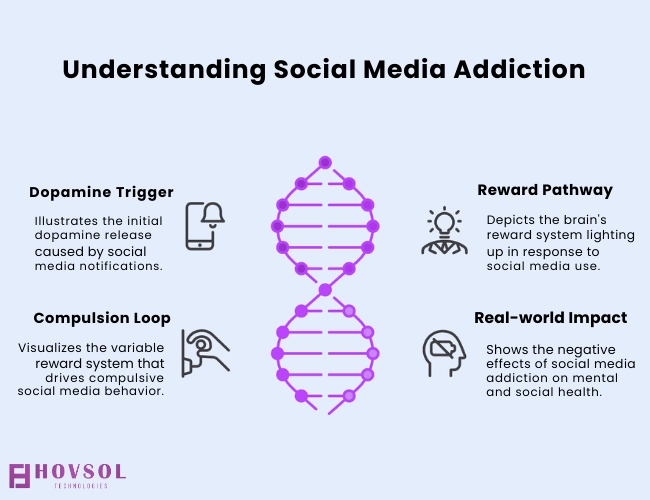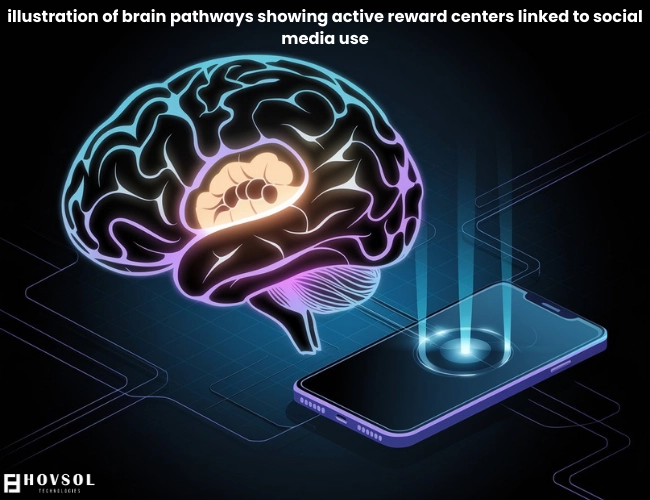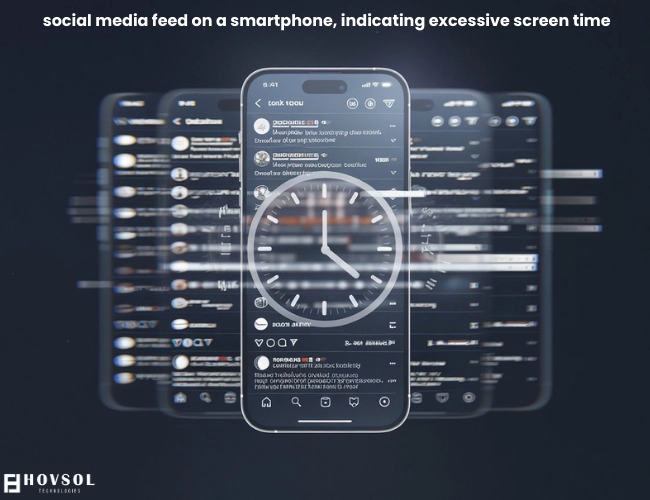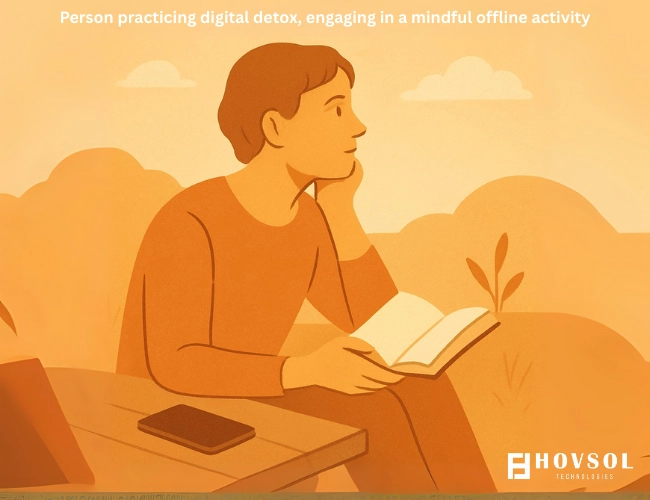Ever wonder why social media feels so hard to put down? It’s not just you. Digital media is often likened to a “digital drug” because of its powerful effect on our brains. Understanding this impact is crucial for building better digital experiences.
The constant cycle of likes, shares, and endless scrolling provides quick hits of dopamine, turning many of us into “dopamine junkies”. Dr. Anna Lembke, an addiction expert, warns that behavioral addictions have soared this millennium. Let’s explore the science behind this powerful pull.
Key Takeaways
- Social media exploits dopamine-driven reward loops, making scrolling addictive and compulsive.
- Excessive screen time reshapes brain pathways, affecting mood, decision-making, and self-control.
- Ethical design and mindful use can reduce risks, promoting healthier digital engagement.

The Dopamine Connection: Why We Get Hooked
Dopamine: The Motivation Molecule
Dopamine, often called the “feel-good” hormone, is more about motivation than pleasure itself. It’s the brain’s major reward neurotransmitter, driving us to seek things we believe will bring happiness. Scientists measure a thing’s addictive potential by its dopamine release.
We experience a dopamine surge in anticipation of an action and when doing it, making us want to continue. After the action, a “dopamine dip” follows, causing cravings for more stimulation.
The Brain’s Reward System
The brain’s reward system, particularly the mesolimbic pathway, activates with rewards like food, money, or even social affirmation. Social media platforms are expertly designed to exploit this biological system. Each like, share, and comment acts as a digital “hit”.
This continuous feedback loop reinforces engagement, making it harder to unplug. Our brains adapt to these habitual dopamine releases, strengthening the reward pathways.
Want to go deeper into the psychology of endless scrolling and how social media pulls you in? 👉 Your Brain on Scroll: The Science Behind Social Media Addiction
Unpredictable Rewards and Compulsion Loops
Social media uses irregularly timed rewards, a technique similar to slot machines. This randomness is highly effective at reinforcing learned behaviors. We compulsively check our phones because we never know when that “delicious ting of social affirmation” might arrive.
Companies like Dopamine Labs use AI to tailor these random rewards, increasing user frequency by as much as 30% in some apps. This creates powerful “compulsion loops” designed to maximize screen time.
How Social Media Rewires Your Brain
Overstimulation and Dysregulation
Constant engagement with digital media leads to frequent dopamine spikes, causing dysregulation in the brain’s reward system. Over time, the brain becomes less sensitive to natural, healthy rewards and more dependent on digital stimuli.
This “dopamine overdrive” can lead to anxiety, stress, insomnia, and mood swings. The constant need for digital rewards creates a cycle of dependency and withdrawal symptoms.
Impact on Brain Structure and Function
Excessive social media use affects critical brain regions. It can impact the prefrontal cortex, which is vital for decision-making, planning, and problem-solving. Our ability to delay gratification is also diminished.
Dysregulation in areas like the basal ganglia and amygdala can weaken executive controls and increase emotional sensitivity. This means impaired impulse control and altered emotional regulation.
The “Digital Cocaine” Analogy
Experts like Dr. Kathryn Lorenz call excessive screen time a “digital drug”. Social media addiction creates the same neural circuitry seen in gambling and recreational drug users.
The “pleasure/reward cycle” initiated by screen time can become detrimental, impacting health and relationships if not managed. This is especially concerning for young, developing brains.

The Real-World Impact on Mental Health and Relationships
Rising Anxiety and Depression
Despite endless fun at our fingertips, global depression rates have climbed significantly. Studies show excessive screen time is linked to increased stress, anxiety, and depression. People in high-income countries report being less happy.
This can stem from the pressure of curated content and constant comparison to others’ “perfect” online lives. Excessive use can even lead to increased suicide risk, particularly in teenage females.
The Fear of Missing Out (FOMO)
Social media creates a pervasive “fear of missing out” (FOMO). Seeing others’ activities can lead to anxiety and compulsive checking to ensure one isn’t excluded.
This continuous comparison with unrealistic online personas can seriously damage mental well-being and self-perception. It reduces satisfaction with one’s own life circumstances.
Strained Connections
Spending more time online can reduce face-to-face interactions, weakening real-life social bonds. This can significantly interfere with our ability to be good parents, spouses, or friends.
The stress and withdrawal symptoms from digital addiction can also strain relationships. We lose our capacity to simply “be alone with our thoughts” or concentrate on taxing tasks.
*Short on time? This Stanford Medicine explainer nails *why your thumb keeps scrolling.
Ethical Design: Marketers’ Role in Digital Well-being
Algorithms for Engagement vs. Ethics
AI-driven social media algorithms are designed to maximize screen time and profit. They continuously tailor feeds to individual preferences, deepening the brain’s reward activation. This focus on profit often overlooks ethical concerns for user well-being.
This raises significant ethical concerns about privacy and potential manipulation, especially for teenagers. Tim Estes even compared AI added to social media as “fentanyl” to “digital heroin”.
Balancing Persuasion with Responsibility
Marketers must acknowledge dopamine’s power to alter habits, both positively and negatively. While persuasive technology can encourage positive behaviors, it carries risks if not used responsibly.
The goal should be to enrich the human condition, not just consume attention. Brands must consider ethical advertising techniques and maintain open communication.
The Call for Transparency
Users, especially teenagers, often don’t understand how their data is collected and used. Social media firms should transparently inform users about data handling, algorithms, and associated risks in an easy-to-understand manner.
Prioritizing user well-being over engagement and profits is essential for ethical platforms. This includes building features that encourage breaks and allow users to customize their content experience.

Addictive Social Media Use vs. Healthy Engagement
| Characteristic | Addictive Social Media Use | Healthy Social Media Engagement |
|---|---|---|
| Mood Impact | Seeking favorable emotional change (mood modification) | Enjoyment, connection, information sharing |
| Preoccupation | Behavioral, cognitive, emotional focus (salience) | Casual, non-intrusive use |
| Tolerance | Ever-increasing use over time | Stable or self-regulated use |
| Withdrawal | Unpleasant symptoms when restricted | No significant distress when offline |
| Conflict | Interpersonal problems ensue | Enhances real-world relationships |
| Self-Control | Repeated unsuccessful attempts to reduce use | Ability to stop or moderate use easily |
FAQs
What is dopamine's main role in social media addiction?
Dopamine motivates us to seek pleasurable things. On social media, likes, shares, and notifications provide quick "hits" of dopamine, reinforcing the behavior and creating a desire for more, leading to addiction.
How does social media affect a teenager's brain?
Teen brains are highly sensitive to rewards, making them vulnerable to social media's addictive design. It can alter brain structures involved in decision-making and emotional control, leading to impulsivity, anxiety, and depression.
What is a "digital detox" and how can it help?
A digital detox means taking a break from electronic devices. This can reset brain pathways, reduce dependency, and help regain perspective on technology use. It encourages prioritizing offline activities for mental well-being. Practical Tip: Try the 20-20-20 rule—every 20 minutes of screen time, look 20 feet away for 20 seconds. It helps reduce eye strain and can break compulsive scrolling patterns.
Why do marketers need to care about this?
Marketers have a powerful influence on user behavior through persuasive technology and algorithms. Understanding the science of social media addiction allows for more ethical, user-centric design that fosters genuine engagement and digital well-being, not just attention for profit.
Conclusion
The science is clear: social media powerfully impacts our brains through dopamine, creating addictive patterns. While digital platforms offer incredible opportunities, the drive for engagement can have unintended consequences on mental health and real-world connections.

As creators and innovators, we hold immense responsibility. Let’s design platforms that genuinely enrich lives, fostering real connection and mindful engagement. Prioritize user well-being, embrace transparency, and build for digital health, not just endless scrolling.




